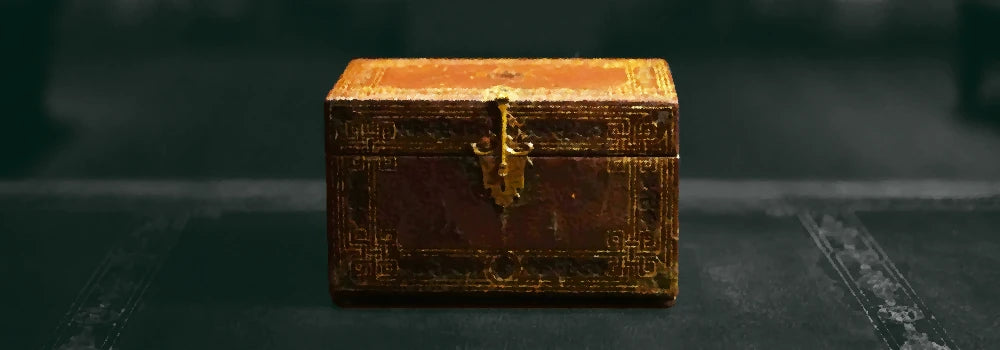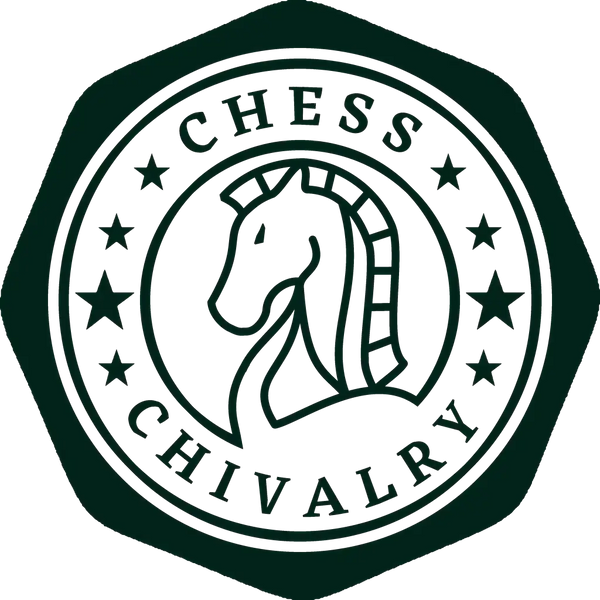
Chess & History: The Most Famous Chess Games
Share
Chess is not just a game; it is an art form and a science that has fascinated people around the world for centuries. Over the course of history, countless amazing games have taken place, demonstrating the strategic thinking and creative brilliance of the best players of their time. In this blog post, we take a look at some of the most famous chess games that not only captivated audiences but also had a lasting impact on the development of chess. From historic duels between grandmasters to epic battles against computers, the games presented here are milestones that explore the limits of the human mind and technology.
The Immortal Game (Anderssen vs. Kieseritzky, 1851)
The Immortal Game, played on June 21, 1851, between Adolf Anderssen and Lionel Kieseritzky, is considered one of the most famous chess games in history. The game took place during an informal tournament in London and became known as the "Immortal Game" because of its brilliant sacrifices and subsequent attacks that couldn't have been more spectacular. The German math teacher Adolf Anderssen, one of the strongest chess players of his time, started with the white pieces. The French chess master Lionel Kieseritzky played black. Anderssen opened with 1. e4, and the game quickly developed into an open and dynamic battle.

Anderssen sacrifices his queen on f6. After the black knight captures the queen, the game ends with a checkmate by a bishop on e7.
After the initial moves, an aggressive and tactically rich King's Gambit emerged. Anderssen pressured Kieseritzky from the start, actively using his pieces to gain space and initiative. In a remarkable sequence of moves, Anderssen sacrificed several pieces: first a knight, then both rooks, and finally his queen, to bring Kieseritzky's king into an untenable position. These sacrifices demonstrated Anderssen's deep understanding of the dynamic possibilities in chess. Despite being materially behind, he used the development and activity of his remaining pieces to launch an overwhelming attack.
The endgame is particularly noteworthy: After sacrificing his queen and both rooks, Anderssen checkmated the black king with just three minor pieces (a bishop and two knights). This brilliant combination and the calculation required made the game unforgettable.
The Immortal Game is often cited as a prime example of the beauty and creativity in chess. It shows how deep tactical understanding and the courage to sacrifice can lead to a stunning victory. To this day, this game inspires chess players worldwide and is featured in countless chess history books.
The Opera Game (Morphy vs. Duke of Brunswick & Count Isouard, 1858)
The Opera Game was played by the American chess master Paul Morphy against two opponents, Duke Karl II of Brunswick and Count Isouard, on October 22, 1858, in a box at the Paris Opera. This game is famous for Morphy's brilliant, fast, and aggressive playing style, which made him one of the greatest chess geniuses of his time. The game began with the opening 1. e4 e5 and quickly showed the importance of early piece development in chess defense. Morphy, playing white, energetically placed his pieces in the center to gain control of the game.

Morphy sacrifices his queen, and black has to capture it with his knight. The game ends with a checkmate by the rook on d8.
The Duke and the Count, playing black together, defended solidly but too passively. They made critical mistakes by bringing a bishop into the attack disadvantageously in the third move and then bringing their queen into play too early, which delayed the development of their pieces. Morphy ruthlessly exploited these advantages and quickly built a strong attack. The climax of the game came after just 15 moves, when Morphy sacrificed a bishop and his queen to force a checkmate combination. The black pieces were not sufficiently developed to fend off the attack, and Morphy's coordinated pieces checkmated the opposing king in the center of the board.
Morphy's performance in this game was admired not only for its technical precision but also for its elegance and beauty. To this day, the Opera Game is studied as an instructive model for chess players of all levels. It shows the importance of quick and harmonious piece development and how tactical motifs can be used to launch a strong attack. Paul Morphy demonstrated his extraordinary ability to master the game at the highest level with this game, leaving a lasting legacy in chess history.
The Game of the Century (Fischer vs. Byrne, 1956)
The Game of the Century, played on October 17, 1956, between the 13-year-old Bobby Fischer and the experienced international master Donald Byrne, is one of the most famous and impressive games in chess history. This game took place during the Rosenwald Memorial Tournament in New York City and showcased the extraordinary talent of young Fischer, who would later become one of the greatest chess players in history.
Byrne, playing white, opened with 1. Nf3, the Reti System, which can lead to flexible and positional structures. Fischer responded with the dynamic Grünfeld Indian Defense, known for its complex and tactical possibilities.
Even in the opening phase, Fischer showed his deep understanding and boldness by sacrificing a pawn to develop his pieces quickly and control the center. Byrne accepted the sacrifice, leading to an open and exciting game. Fischer put Byrne under strong pressure and developed his pieces with impressive precision.

Fischer moves his bishop to e6 and sacrifices his queen. Byrne captures the queen, but Fischer launches a relentless sequence of moves.
The highlight of the game came in the 17th move when Fischer seemingly carelessly sacrificed his queen on b6. This apparent mistake turned out to be a brilliant tactical strike. Byrne captured the queen, allowing Fischer to initiate a combination that gave him an overwhelming position. In the following moves, Fischer continued his initiative, leading his pieces with great elegance and efficiency. He continuously pressured the black king, chasing it across the board, and checkmated it after 41 moves.
The game demonstrated Fischer's extraordinary talent and ability to handle complex positions masterfully. As he was only 13 years old at the time, the game against Byrne marked the rise of Bobby Fischer as one of the greatest chess geniuses.
The Match of the Century (Fischer vs. Spassky, Game 6, 1972)
The Match of the Century between Bobby Fischer and Boris Spassky took place in 1972 in Reykjavík, Iceland, and is considered one of the most significant events in chess history. Particularly noteworthy is the sixth game of the series, played on July 23, 1972. This game marked a turning point in the match and is often regarded as Fischer's masterpiece.
Fischer, who entered the match as the outstanding chess player from the USA, faced the reigning world champion Spassky from the Soviet Union. The Cold War added extra political tension to the match. After initial difficulties and controversies caused by Fischer's extravagant character, which almost brought the match to a halt, he had already won an important victory in the fifth game. But it was the sixth game that truly revealed his brilliance and strategic depth. In this game, Fischer chose the unusual opening 1. c4, the English Opening, instead of his usual 1. e4. This choice surprised both Spassky and the chess world. Fischer played a series of complex and precise moves in the middlegame, demonstrating strategic mastery. His ability to exploit even the smallest advantage and build on it earned him worldwide recognition.

The end of one of Fischer's best games, played with one of his rarest openings: the Queen's Gambit.
A key move was 20.e4 d4. Fischer attacked the center with his pawn, and Spassky responded by advancing to d4. This fixed the black pawns in the center and allowed Fischer to initiate an attack on the kingside. With the support of his rooks, Fischer eventually won. Spassky, recognizing the quality of Fischer's play, applauded at the end of the game, which was seen as a remarkable gesture of respect. The sixth game was a crucial contribution to Fischer's victory in the World Championship.
The Match of the Century remains a milestone in chess history, as the historical context drew attention to the game and the extraordinary skills of the opponents deserved the highest admiration.
Kasparov vs. Deep Blue (Game 1, 1996)
In February 1996, a historic duel took place in Philadelphia between reigning world champion Garry Kasparov and the IBM supercomputer Deep Blue. This match was the first time a reigning world champion faced a computer specially developed for chess. The first game of the match provided impressive insights into the abilities of both human genius and machine calculation power.
In the first game, played on February 10, Deep Blue achieved a remarkable victory against Kasparov. The computer played with the white pieces and responded to Kasparov's Sicilian Defense with the Alapin Variation. Deep Blue demonstrated impressive computational power and strategic depth. Kasparov, known for his tactical brilliance, found himself in an unfamiliar position: he was powerless against Deep Blue's relentless calculation power.

After a tough battle, Kasparov was forced to resign.
This victory marked the first time a computer program defeated a reigning world chess champion under standard tournament conditions. Although this win was the only one in the match, and Kasparov managed to win overall, just one year later, Deep Blue would claim a rematch victory and finally prove its superiority over humans.
Conclusion
There are countless chess games that showcase incredible chess moves, highlighting the fascination and beauty of chess. Moreover, most games illustrate specific playing styles from which one can learn well. Whether it is an aggressive attack, efficient development of pieces, or elaborate foresight in moves. In chess literature, they will certainly take on the significance of artworks that will endure through time and immortalize their players.
I hope the games presented here entertained you and highlighted the fascination of chess. If you have any further questions, feel free to contact me through my contact form. Playing chess on a real chessboard is still very popular today. If you are interested in chess pieces or chess boards in tournament size, you are welcome to have a look at my product range.
I wish you lots of fun, success, and quick progress in learning the game.
See you soon.
Stefan
